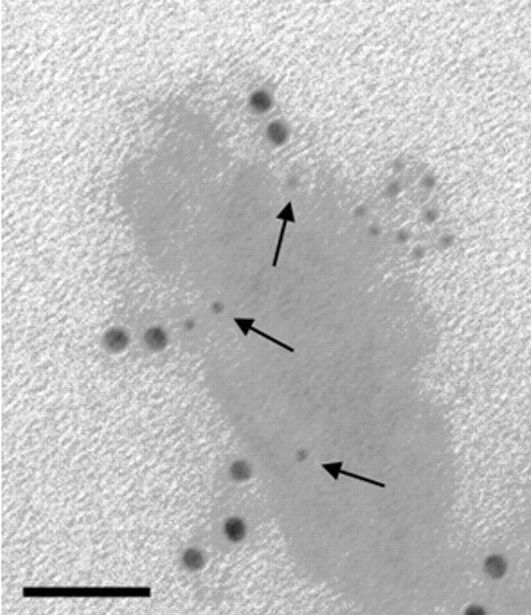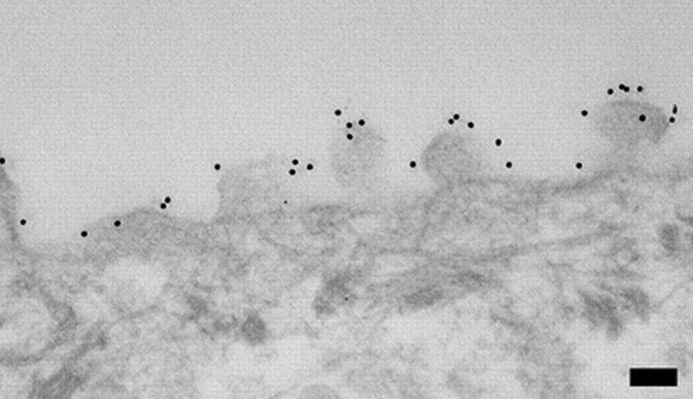
"I have used a wide variety of secondaries and Jackson ImmunoResearch has consistently been the best. The fluorophores are bright and stable and their selective (x reactivity removed) secondaries have always shown species specificity in multiple labeling."
Janet Duerr, Ohio UniversityRating: 5.0

Electron microscopy (EM) allows the collection of high-resolution images using electron beams in the place of light. Staining and immunolabeling with electron dense material enables the visualization of the structures of the sample by adding contrast to the image. Transmission electron microscopy (TEM) requires electrons to pass through thinly sliced specimen sections, allowing 3D images to be compiled and subcellular organelles to be observed. Scanning electron microscopy (SEM) detects the scattered electrons or those emitted from the sample surface. The angle of collection gives the images a 3D quality.
Jackson ImmunoResearch ImmunoGold reagents are colloidal gold particles complexed to secondary antibodies. The electron-dense gold increases electron scatter to reveal high contrast “spots” which allow analytes to be visualized. Labeling of multiple analytes can be achieved by using secondary antibodies complexed to differently sized particles (Figure 1). In addition to TEM and SEM applications, ImmunoGold reagents can be used for brightfield microscopy.
Read more about ImmunoGold reagents for electron microscopy and light microscopy

